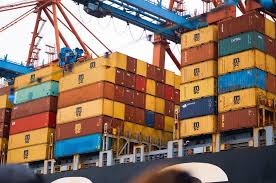Shipping large items is a complex and specialized aspect of logistics. It requires careful planning, the right equipment, and expertise to ensure that goods arrive safely and efficiently at their destination. As businesses and industries grow increasingly global, the demand for transporting oversized or heavy goods has expanded significantly. Shipping companies handle a diverse range of large items from industrial machinery to oversized furniture. This article explores the types of large items commonly shipped, the challenges associated with their transport, and how shipping companies manage these complex logistics.
Types of Large Items Commonly Shipped
Large items encompass a wide array of goods across various industries. Each type of item presents its own unique set of challenges in terms of handling, packaging, and transportation. Below are some of the most common types of large items that shipping companies handle.
Industrial Machinery and Equipment: One of the most significant categories of large items that require shipping is industrial machinery and equipment. These items include everything from construction machinery, such as excavators and bulldozers, to manufacturing equipment like presses, lathes, and milling machines. These machines are often oversized, and heavy, and require specialized transport vehicles, such as flatbed trucks or lowboy trailers, to accommodate their size and weight. Additionally, shipping industrial machinery often involves meticulous planning to ensure that the equipment is properly secured and protected during transit, as any damage can result in significant financial losses.
Vehicles and Automotive Parts: Another major category of large items frequently shipped is vehicles and automotive parts. This includes everything from cars, trucks, and motorcycles to large components such as engines, transmissions, and chassis. Shipping vehicles require specialized equipment such as car carriers or enclosed trailers, which protect the vehicles from the elements and potential damage. In some cases, vehicles may be shipped in containers for added security, particularly when they are being transported internationally. Automotive parts, particularly those that are oversized or unusually shaped, may require custom crating or packaging solutions to ensure they are adequately protected during transit.
Furniture and Household Goods: Shipping large items is also a common requirement in the furniture and household goods sector. This includes items such as sofas, dining tables, beds, and appliances like refrigerators and washing machines. These goods are often bulky and may be difficult to maneuver, requiring careful packaging and handling to prevent damage. Shipping companies often use padded blankets, shrink wrap, and custom crates to protect these items. Additionally, furniture and household goods are often shipped as part of residential moves or deliveries from manufacturers and retailers to customers, requiring coordination and timing to ensure a smooth delivery process.
Renewable Energy Equipment: The renewable energy sector is another industry that frequently requires the shipping of large items. This includes components for wind turbines, solar panels, and energy storage systems. Wind turbine blades, for example, can be over 100 feet long and require specialized trailers and escorts to navigate public roads. Similarly, large solar panels or energy storage systems need to be carefully packaged and handled to prevent damage during shipping. Given the size and weight of these items, shipping renewable energy equipment often involves detailed route planning and coordination with local authorities to ensure safe and efficient transport.
Construction Materials: Shipping large items is also essential in the construction industry, where materials such as steel beams, concrete panels, and prefabricated building components need to be transported to construction sites. These materials are often oversized, and heavy, and may require specialized handling equipment such as cranes or forklifts. Additionally, construction materials often need to be delivered on a tight schedule to ensure that construction projects stay on track, making timely and reliable shipping services crucial.
The Challenges of Shipping Large Items
Shipping large items presents several challenges that go beyond those associated with smaller, more conventional shipments. These challenges include the need for specialized equipment, careful planning, and coordination with multiple stakeholders to ensure a successful delivery.
Specialized Equipment and Handling: One of the primary challenges of shipping large items is the need for specialized equipment and handling techniques. For example, oversized machinery may require flatbed trucks or lowboy trailers, while delicate items like large furniture may need custom crates or padded blankets to protect them during transit. Additionally, loading and unloading large items often require the use of cranes, forklifts, or other heavy-duty equipment, which must be carefully coordinated to avoid delays or damage.
Regulatory Compliance: Shipping large items, particularly those that are oversized or overweight, often involves navigating a complex web of regulations. These regulations may vary depending on the size and weight of the shipment, the mode of transport, and the routes taken. For example, transporting oversized loads on public roads may require special permits, escort vehicles, or restricted travel times to ensure the safety of other road users. Additionally, international shipments may involve customs clearance, import/export documentation, and compliance with local regulations, adding further complexity to the shipping process.
Risk Management: The risk of damage is another significant challenge when shipping large items. Because these items are often valuable and difficult to replace, shipping companies must take extra precautions to ensure that they are adequately protected during transit. This may involve using reinforced packaging materials, securing items with straps or braces, and conducting thorough inspections before and after transport. Additionally, shipping companies may offer insurance options to cover any potential damage or loss, providing peace of mind to their clients.
Coordination and Timing: Coordinating the shipment of large items often requires careful planning and communication between multiple stakeholders, including shippers, carriers, and receivers. Timing is critical, particularly for industries such as construction or manufacturing, where delays can have a significant impact on project timelines and costs. Shipping companies must work closely with their clients to develop detailed shipping plans, including route planning, equipment allocation, and contingency measures to address any potential issues that may arise during transport.
The Role of Technology in Shipping Large Items
Advancements in technology have played a crucial role in improving the efficiency and reliability of shipping large items. From real-time tracking to automated route planning, these technologies help shipping companies manage the complexities of transporting oversized or heavy goods.
Real-Time Tracking: One of the most significant technological advancements in the logistics industry is the ability to track shipments in real-time. This technology allows shipping companies and their clients to monitor the location and status of large items throughout the shipping process, providing greater visibility and control. Real-time tracking also enables shipping companies to proactively address any potential delays or issues, ensuring that shipments arrive on time and in good condition.
Automated Route Planning: Automated route planning is another technology that has revolutionized the shipping of large items. This technology uses algorithms to analyze factors such as road conditions, traffic patterns, and regulatory restrictions to determine the most efficient and cost-effective route for each shipment. By optimizing routes, shipping companies can reduce transit times, lower fuel costs, and minimize the risk of delays or disruptions.
Digital Documentation: The use of digital documentation has streamlined the administrative aspects of shipping large items. From permits and customs declarations to bills of lading and insurance certificates, digital documents can be easily shared and stored, reducing the risk of errors and speeding up the shipping process. Additionally, digital documentation allows for better record-keeping and compliance, ensuring that all regulatory requirements are met.
Conclusion
Shipping large items is a complex and specialized process that requires careful planning, the right equipment, and a deep understanding of the logistics involved. From industrial machinery and vehicles to furniture and renewable energy equipment, shipping companies handle a diverse range of oversized and heavy goods. While these shipments present unique challenges, advancements in technology and the expertise of shipping companies have made it possible to transport large items safely and efficiently. As global trade continues to expand, the demand for shipping large items will only increase, making it essential for businesses to partner with experienced logistics providers who can navigate the complexities of this specialized field.




